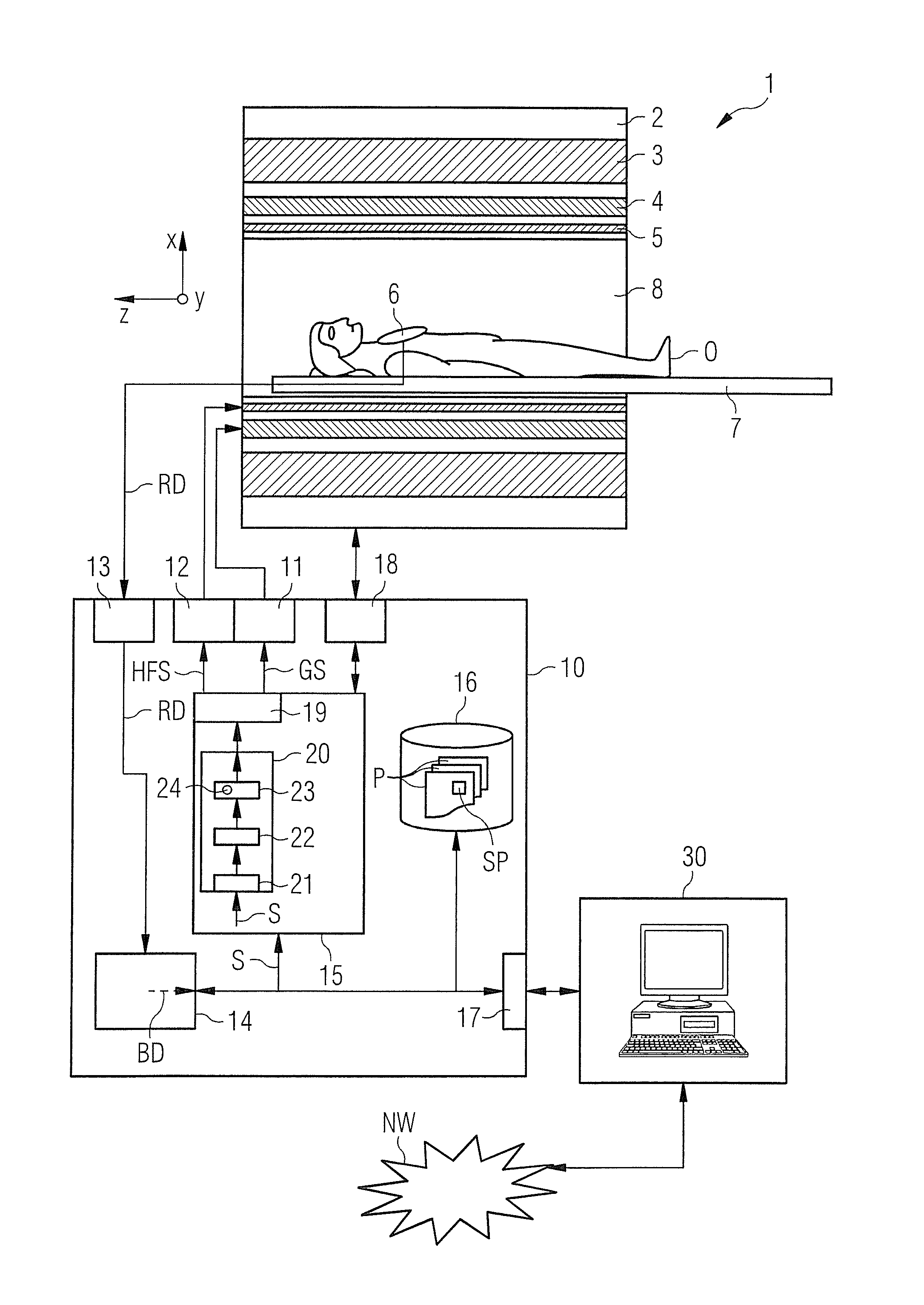Method and device for optimization of a pulse sequence for a magnetic resonance system
a magnetic resonance system and pulse sequence technology, applied in the direction of reradiation, measurement using nmr, instruments, etc., can solve the problems of affecting the performance of the gradient coil, so as to achieve the effect of less calculation time and small effor
- Summary
- Abstract
- Description
- Claims
- Application Information
AI Technical Summary
Benefits of technology
Problems solved by technology
Method used
Image
Examples
Embodiment Construction
[0068]In the following, the invention is described in an example of an implementation in the pulse sequence optimization device or of a use within the optimization method as they are explained in detail as an exemplary embodiment in DE 10 2013 202 559. However, at this point it is explicitly noted that the invention can also be used in other forms, for example directly in the pulse design or, respectively, the original calculation or preparation of the pulse sequence.
[0069]Roughly schematically shown in FIG. 1 is a magnetic resonance system 1 set up according to the invention. On the one hand, it comprises the actual magnetic resonance scanner 2 with an examination space 8 or, respectively, patient tunnel 8 located therein. A bed 7 can be driven into this patient tunnel 8, such that a patient O or test subject lying on can be supported at a specific position within the magnetic resonance scanner 2 relative to the magnet system and radio-frequency system arranged therein or, respecti...
PUM
 Login to View More
Login to View More Abstract
Description
Claims
Application Information
 Login to View More
Login to View More - R&D
- Intellectual Property
- Life Sciences
- Materials
- Tech Scout
- Unparalleled Data Quality
- Higher Quality Content
- 60% Fewer Hallucinations
Browse by: Latest US Patents, China's latest patents, Technical Efficacy Thesaurus, Application Domain, Technology Topic, Popular Technical Reports.
© 2025 PatSnap. All rights reserved.Legal|Privacy policy|Modern Slavery Act Transparency Statement|Sitemap|About US| Contact US: help@patsnap.com



